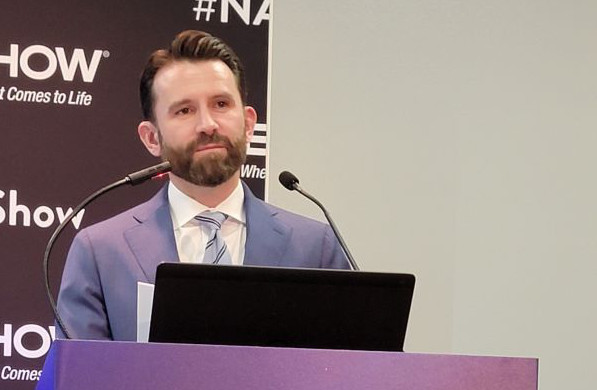IP newsgathering brings new opportunities, challenges for TV stations

A slow, steady transition is underway among some news organizations seeking greater reach, new economies and enhanced workflow efficiencies in the field.
Turning to a variety of wireless Internet connections, such as WiFi, WiMAX or 4G broadband networks on the ground or IP connectivity via satellites, like Inmarsat’s BGAN constellation, these trendsetters are supplementing their traditional microwave ENG and SNG contribution, and in some instances even contemplating retiring such legacy backhaul systems and reallocating resources to send more reporters into the field equipped with little more than a camera, a laptop, an encoder and a mobile Internet connection.
From a functional point of view, contribution of live and edited video via broadband wireless Internet achieves most of what’s commonplace with traditional microwave and satellite contribution. But the lower cost of IP backhaul not only gives TV stations eager to put more feet on the street an affordable way to do so, it also creates a lower cost of entry for new competitors wishing to do live stand-ups and submit edited packages.
One example is Go-Live, an Israeli company that’s built a business on serving the needs of webcasters wanting to do live field contribution. The company’s Go-Live Kit makes possible live video contribution of real-time, professional-quality Flash H.264 or Windows Media 9 streaming media over 3G networks via cellular modem. At the heart of the company’s newsgathering backpack is the ViewCast Niagara 2120 streaming media appliance, which compresses video to 300kb/s and 400kb/s commonly used for 3G contribution, said Go-Live CEO and CTO Eitan Ortal.
“We needed a way to transmit live over the Internet while still remaining highly mobile,” Ortal said. “We wanted a solution for electronic newsgathering for webcast events, and we also wanted something that was simple to use in a one-man camera crew scenario.”
The result, the Go-Live Kit backpack solution, is growing in popularity.
“Since we built the kit, earlier this year, it has mainly been used by Israeli news portals,” Ortal said.
Get the TV Tech Newsletter
The professional video industry's #1 source for news, trends and product and tech information. Sign up below.
According to Ortal, the market in Israel is “not built for TV broadcasting but for webcasting.” However, for the past five years, these Internet portals have been unable to cover news live from the field because they couldn’t afford the microwave technology required.
“They would have needed an OB van to transmit video from the location of the story to the control room and there re-encode it to be conveyed over the Internet,” Ortal said.
“With the development of 3G and 4G networks, the days of ENG vans are numbered,” he said. “With a solution like the Go-Live Kit, a journalist can go straight from the field via the Internet to the server.”
While Ortal’s enthusiasm for his product may be understandable, in the United States, there is a large installed base of ENG trucks, ENG receivers, ENG relay sites and an investment of more than $800 million in new digital 2GHz Broadcast Auxiliary Service gear and its installation. That alone makes the demise of traditional ENG unlikely in the foreseeable future.
But what is likely is that IP newsgathering will supplement traditional ENG workflows at stations and make it much easier for new competitors to begin reporting live from the scene of breaking news via the Internet.
Phil Kurz is a contributing editor to TV Tech. He has written about TV and video technology for more than 30 years and served as editor of three leading industry magazines. He earned a Bachelor of Journalism and a Master’s Degree in Journalism from the University of Missouri-Columbia School of Journalism.

